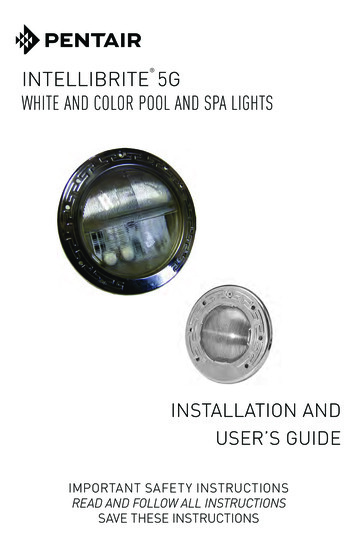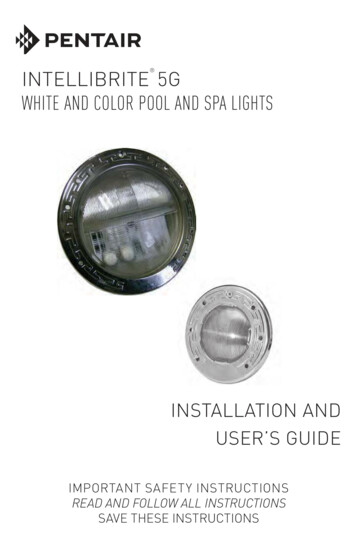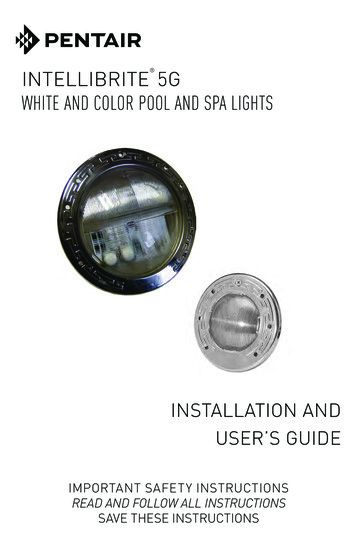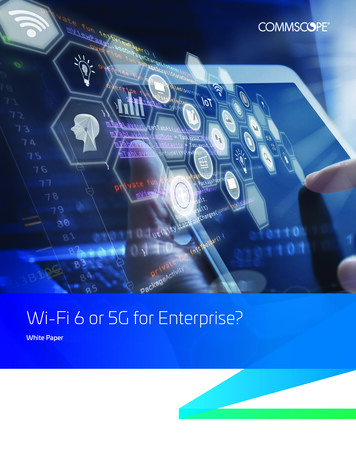
Transcription
Wi-Fi 6 or 5G for Enterprise?White Paper
AbstractEnterprise IT leaders, commercial property owners, and facilities managers need to develop strategies that willensure wireless connectivity that meets the evolving needs of all their stakeholders. Wi-Fi 6 and 5G representthe latest emerging wireless standards in the unlicensed and licensed spectrum, respectively, with each offeringimpressive capabilities across multiple dimensions. Given the significant advances embodied in each of them,it’s natural to ask whether both are still needed—or whether one will replace the other.This paper explains the differences and similarities between these technologies and explores how enterprisesand building owners are likely to use each of them moving forward.Introduction and background5G is the fifth-generation technology standard for cellular networks, developed under the auspices of the Third GenerationPartnership Project (3GPP) as the successor to 4G/LTE (hereinafter LTE). Mobile network operators (MNOs) began deploying 5Gworldwide in 2019. Wi-Fi 6 is based on the IEEE 802.11 family of standards, which is used for local area networking of devices andinternet access. Wi-Fi 6 is the Wi-Fi Alliance’s name for 802.11ax (hereinafter Wi-Fi 6).The concurrent emergence of Wi-Fi 6 and 5G is the latest example of parallel advances in Wi-Fi and mobile cellular standardsand technologies that has been going on for over two decades. The original 802.11 Wi-Fi standard released in 1997 supportedmaximum data rates of 1 or 2 megabits per second. The first 3G networks were introduced in 1998—initially supporting up to384 kilobits per second. Initial 5G services being deployed in 2020-21 support 2-4 gigabits per second, and subsequent 5Greleases promise to increase the rates by a factor of 5 to 10 over the next decade. Meanwhile, Wi-Fi 6 supports rates of more than10 gigabits per second.Wi-Fi and cellular technologies have followed parallel evolution paths.10 Gbps1 Gbps100 Mbps10 Mbps1 Mbps802.11 Wi-Fi evolution3GPP cellular evolution.1 List of mobile phone generationshttps://en.wikipedia.org/wiki/IEEE 802.112 Wi-Fi 6 or 5G for Enterprise? White Paper201020152020
All things being equal, Wi-Fi generally provides higher data rates than comparable generation cellular services due in part to themuch shorter distance the signal must travel. The actual speed a user experiences depends on many other factors, including availablechannel bandwidth, number of users sharing the channel, and distance from the signal source. Also, data rate is only one measureof performance. Latency and reliability, for example, are also critical for many applications. Wi-Fi can suffer from congestion due tobandwidth that is inadequate for the number of users, which can in turn lead to both low speed and high latency. Wi-Fi 6E, whichgreatly expands the spectrum available to Wi-Fi 6, will mitigate these problems.Many comparisons of Wi-Fi 6 and 5G focus almost exclusively on these performance differences. While these are meaningful forcertain applications, excessive focus on these differences can obscure the larger point that today’s Wi-Fi and cellular technologies bothmeet the requirements of many applications. Therefore, to understand why one might be preferred over another, it’s important toexamine other factors.Licensed and unlicensedThe first important distinction is in the way spectrum is allocated for each of the technologies. We use the terms “licensed” and“unlicensed” to describe this. With licensed spectrum, a commercial entity (typically an MNO) acquires exclusive rights to usespecified frequency bands within a geographical area. With unlicensed spectrum, the frequency band is open for anyone to use,subject to agreed practices that prevent users from interfering with one another. 5G (like all the Gs before it) operates in licensedspectrum while Wi-Fi 6 (and all Wi-Fi) operates in unlicensed spectrum.Business modelsThis licensed/unlicensed distinction translates directly into different business models associated with the use of 5G and Wi-Fi. MNOsdeploy 5G along with LTE and legacy technologies as a paid service offering that includes voice calling, text messaging, internetaccess and supporting services like voice mail. The user accesses the spectrum in the form of a service subscription with the MNO—hence the term “subscriber,” which describes a mobile user.Even when enterprise IT organizations or building owners deploy licensed spectrum systems (such as distributed antenna systems orsmall cells), they are only providing access to the operator’s network and services, and the operator must approve the deployment.By contrast, Wi-Fi networks are deployed by an enterprise or venue for use by their own employees accessing the enterprisenetwork—and by customers accessing enterprise services such as hotel check-in or the internet. Thus, Wi-Fi is an intrinsic part of thebusiness operation. Home users similarly deploy Wi-Fi networks (usually consisting of a single router or access point) for their ownhousehold members.Use cases: The right tool for the jobFor the cellular subscriber, the advantage of the licensed MNO model is that connection to the network is automatic, universal, andpervasive. The subscriber never needs to look for an SSID or enter a password. This seamless access makes cellular the universal voicetechnology because users can call and be called via the same process—no matter where they are. Wi-Fi is also used for voice, notablywithin applications like Zoom or Teams, but this assumes a shared application environment and application-specific calling proceduresby all participants.Cellular technology also has greater range to cover large spaces, and it is inherently mobile—meaning users’ sessions are maintainedas they move between serving radios even while driving at high speed. Mobility is another feature that makes cellular especially wellsuited to voice calling, since voice call user experience can be disrupted by session interruptions, whereas many data experiences (forexample, email) are not. Cellular is also the technology on which emergency services organizations (fire, police, ambulances) havestandardized for their communications, again due to its longer range, mobility, and universal access.3 Wi-Fi 6 or 5G for Enterprise? White Paper
By contrast, with Wi-Fi, a private enterprise or homeowner can create a network without reliance on a service provider. As such, it isthe default access method for both enterprise and home networks. Wi-Fi technology provides unmetered high-speed connectivity thatcan be implemented anywhere, anytime by the organization or homeowner.Further, because Wi-Fi is deployed by the enterprise or venue owner, it enables end-user data collection by those entities. This hasbeen a significant driver of Wi-Fi deployment—especially in public spaces such as shopping and entertainment venues. User data thatis created when visitors attend an event or frequent a store enables enterprises to better understand, serve and engage with theirpatrons and customers. User data has become the “new oil” in its commercial value.Despite the natural advantages of Wi-Fi for many forms of network and internet access, there are still cases in which cellular ismore suitable. When users are somewhere other than their home or permanent office location, they may prefer to use their cellularconnection (which is automatically on) rather than take the extra steps to log onto public Wi-Fi (assuming it is present). In fact, thevery actions that organizations take to monetize Wi-Fi—collecting user data or showing ads, for example—can be incentives for theuser to stay on cellular.The differing deployment models and their implications for business models and use cases help explain why, to date, neither cellularnor Wi-Fi has replaced the other; on the contrary, both have flourished. The emergence of Wi-Fi 6 and 5G does little to alter thisfundamental dynamic. To be sure, there are overlapping use cases such as internet access, but the persistent differences continue tomake the technologies complementary rather than substitutes for one another.Wi-FiCellularData/internet accessYesYesWhere used for dataSustained presence: home,office, hotelEverywhere elseVoice telephonyApplication-specificUniversalWhere used for voiceSpecific settings, use casesEverywhereEnterprise network accessUniversalApplication-specific5G and Wi-Fi 6 have technical differences, but deployment and business model differences are equally significantBlurring the distinction: private cellular and OpenRoamingRecent developments have the potential to blur the licensed/unlicensed technology distinction—enabling each to cross into the other’sdomain.Private cellular networksOn the cellular side, regulators are allocating spectrum for private use, either through site-specific allocations (common in Europe) orthrough a dynamic spectrum sharing arrangement such as Citizens Broadband Radio Service (CBRS) in the U.S. These are sometimesreferred to as “lightly licensed.”Private cellular networks are initially being targeted for critical communications such as factory automation or operationalcommunications across large venues like airports or distribution hubs. These applications benefit from cellular technology’s range,mobility, security, and deterministic performance. While private cellular is akin to Wi-Fi in its spectrum ownership model, deploymentmodel and business operation support function, it is not a wholesale alternative to Wi-Fi. For generalized network access andwidespread use, Wi-Fi is already well established and has much greater capacity.4 Wi-Fi 6 or 5G for Enterprise? White Paper
Private cellular networks and Wi-Fi both provide robust security, but in different ways. With Wi-Fione creates logical network segments—for example, to separate enterprise users from guestsfrom IoT devices. Each segment can have its own appropriate security policies such as accesscredentials, server privileges and encryption methods. CBRS achieves security in large part bybeing a separate (from Wi-Fi) physical network. Access devices require physical SIM cards, pluslogon credentials if applied. Other user devices within the coverage area will not even be awareof the presence of the CBRS network. With both Wi-Fi and CBRS, user and application data canbe kept within the organization.OpenRoamingOn the Wi-Fi side, there are industry efforts to replicate the automatic pervasive access nature ofcellular, starting with Hotspot 2.0 and Passpoint r1, and subsequent release updates of Passpointr2 and r3. The Wireless Broadband Alliance’s OpenRoaming program leverages Passpoint and afederation of identity and venue providers to support Wi-Fi network roaming.With cellular-to-Wi-Fi roaming becoming invisible to the user, OpenRoaming has the potentialto divert usage from cellular to Wi-Fi—especially indoors. This will require a critical mass ofOpenRoaming adoption, notably by mobile operators and hotspot owners. Operators haveCommScope in Wi-Fi 6 and 5GCommScope provides Wi-Fi 6,5G and CBRS infrastructure forenterprises, service providers andresidential users. We see an ongoingneed for both Wi-Fi and cellulartechnologies, so we continue toinvest in a range of 5G and Wi-Fi 6solutions. For further information,see the links below:Wi-Fi for enterprise and serviceprovider networksIn-building 5G and CBRS cellularsystemsHome gatewaysCellular base station antennashistorically been reluctant to deliver their services over networks they do not operate, dueto their desire to control the quality of the subscriber experience, which is brand-affecting.OpenRoaming is addressing this concern by enabling Wi-Fi hotspots to provide tiered service(e.g., bronze silver, gold) to operators, with mechanisms to monetize the hotspot investments,thereby increasing the offload of cellular services to Wi-Fi in more places.As of early 2021, device vendors, including Google and Samsung, are shipping OpenRoaming-capable devices. However, the degreeto which MNOs will adopt this offload model is not known, nor whether it will be used for voice calling or only for data. It shouldalso be noted that, to date, the focus of OpenRoaming has been on inter-Wi-Fi roaming rather than cellular-to-Wi-Fi.ConclusionAs Wi-Fi and cellular technologies evolve, it is natural for their respective domains to overlap. However, we believe that, despite suchoverlap, both technologies will continue to be complementary—serving the broad range of enterprise services and applications.It can even be argued that cellular and Wi-Fi indirectly drive each other’s growth. As apps and their users become more dependenton high-speed Wi-Fi connections at home or in the office, this in turn drives demand for the same connection quality over cellularwhen users are away from their Wi-Fi networks. Likewise, the ubiquitous nature of cellular connectivity begs a similar expectation ofWi-Fi; hence, the increased emphasis on public Wi-Fi and developments like OpenRoaming.CommScope will continue to invest in both Wi-Fi and cellular technologies and solutions.commscope.comVisit our website or contact your local CommScope representative for more information. 2021 CommScope, Inc. All rights reserved.Unless otherwise noted, all trademarks identified by or are registered trademarks or trademarks, respectively, of CommScope, Inc. This document is for planning purposes only and is not intendedto modify or supplement any specifications or warranties relating to CommScope products or services. CommScope is committed to the highest standards of business integrity and environmentalsustainability, with a number of CommScope’s facilities across the globe certified in accordance with international standards, including ISO 9001, TL 9000, and ISO 14001. Further information regardingCommScope’s commitment can be found at -and-sustainability.WP-115577-EN (03/21)
spectrum while Wi-Fi 6 (and all Wi-Fi) operates in unlicensed spectrum. Business models This licensed/unlicensed distinction translates directly into different business models associated with the use of 5G and Wi-Fi. MNOs deploy 5G along with LTE and legacy technologies as a paid service offering that in
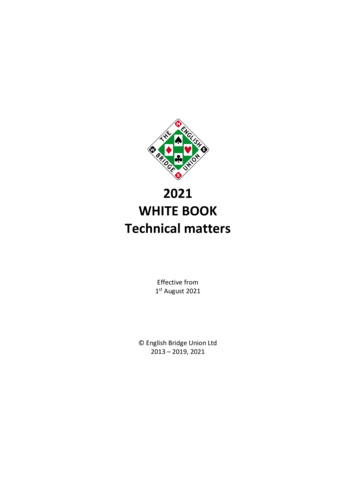


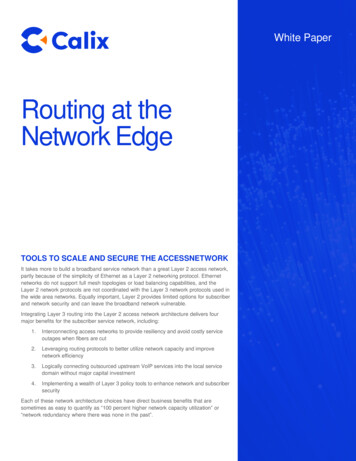

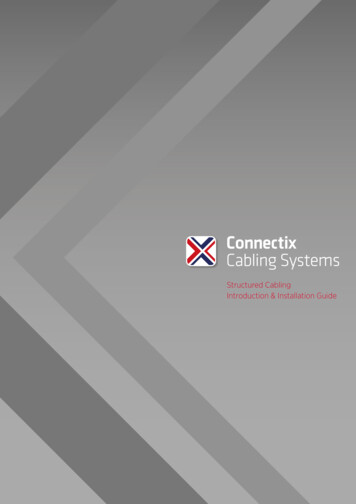
![[CLASS XII CHEMISTRY PRACTICALS]](/img/23/xii-chemistry-practical.jpg)
